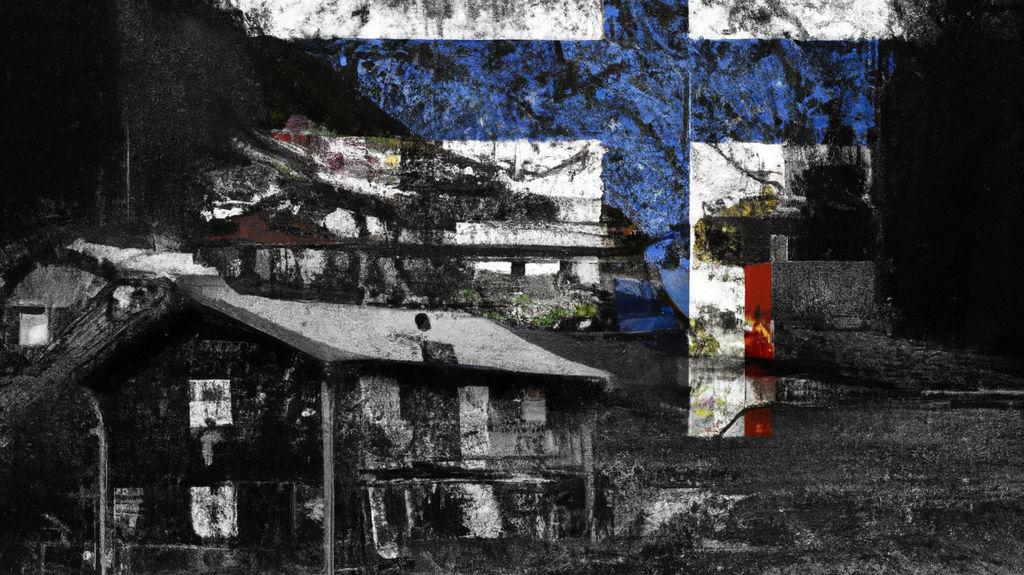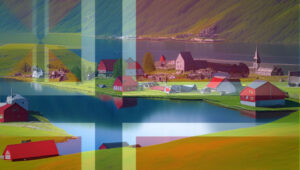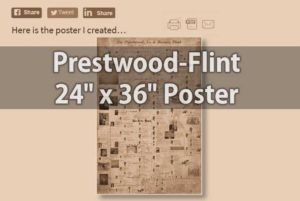Patronymics, a naming system with a long history, was once used but is no longer practiced in Norway. In the 1600s, some families began adopting permanent surnames, which became widely adopted by the 1900s. This shift marked a significant change in Norwegian culture.
To avoid confusion caused by a large number of people sharing the same name, Norwegians used the same given names for their first two sons and daughters. To distinguish individuals, they would connect them with their named residence, which could change throughout their life due to marriage or relocation. Eventually, these placenames became permanent surnames, especially by 1900. These farms in Norway vary in size from single-family homes to small villages.
Starting in the 1600s, some Norwegian families adopted fixed surnames for their descendants. Men used only the family name in records, while women were identified with the family name preceded by “fodt” or “f.” For example, Ragnhild was referred to as Ragnhild Stiruplyen, linked to the Gunvallgaard farm or house. In some cases, she might be identified as Ragnhild Engebretsdatter f. Stiruplyen, meaning Ragnhild, daughter of Engebret, using the family name Stiruplyen.
Researching Placenames
When researching your Norway ancestors I find it useful to make a reference list of ancestor placenames and locations. It takes an hour or two but will safe you countless hours and minimize mistakes. To organize them, I like to focus on generations back from the immigrating couple. I generally prefer to organize by couples and their wedding year so I list these placenames as well as known locations by marriages. My attempted order for these locations within each person is from their birth to burial. The following list for me is invaluable for researching my Norwegian ancestors. For fun, I use the Norwegian term for wife, “gift med” which translates to “married to.” For known fixed family names I’ll do as the Norwegians do and put “fodt” preceding the name which translates to “born.” The location of each marriage in underlined which helps with locations before and after marriage.
Note: Please do not rely on the following list other than as research ideas. It is an evolving list as I research more and more.
Immigrating Couple:
- m1854: Ben Olsen* – Bubakken*/bubakka, Gjerde*, ?fodt Stiruplyen?
(Known Locations: Gol, Nes, Buskerud, Gol, Bubakken, Gjerde, New York, Blooming Prairie, Udolpho, Grand Forks, Mekinock) - gift med: Kari Tollefsdatter/Torleivsdatter* – Horn*/Haarnet/Hornit, Bubakken
(Known Locations: Jodock, Nes, Hornet, Gol, Bubakken, Hemsedal, New York, Blooming Prairie, Udolpho)
Parents:
- m1820 (circa): Tollef/Torleiv* Tollefsen/Torsleivson* – Intelhüüs, Horn*/Harnet (Kari Tollefsdatter’s parents)
(Known Locations: Hemsedal, Intelhuus, Jodøk, Hornet) - gift med: Ingeborg “Kari” Iversdatter* – Myte*, Markegaard
(Known Locations: Mÿte, Nes, Hemsedal, Intelhuus, Jodøk, Hornet) - m1809: Ole Engebretsen* – Bubakken/Bubakka* Gunvallgaard*, ?fodt Stiruplyen? (Ben’s parents)
(Known Locations: Bubakken, Hemsedal, Gunnvaldgarde, Hallingdal, Løkji, Gol, Bubakken, Buskerud) - gift med: Rangdi Bjornsdatter* – Hogehaug*, Halbjorhus*
(Known Locations: Hemsedal, Hallingdal, Løkji, Gol, Buskerud, Bubakken)
Grandparents:
- m1768: Gunvall Engebretsen* – Gunnvaldgaard*, Jolem, fodt Stiruplyen (Ole’s parents)
(Known Locations: Finnesgaard Gol, Hemsedal, Bubakken, Gunnvaldgarde)
- gift med: Sunneiv Torstendatter* – ?
(Known Locations: Buskerud, Hemsedal, Nes, Lykkja, Bubakken, Gunvaldgarde, Hemsedal) - m1780 (circa): Bjorn Knutsen* – Hogehaug*/Høgehaug, (Rangdi’s parents)
(Known Locations: Hemsedal) - gift med: Mari Thorsdatter* – Haugen*/Hogehaug/Høgehaug
(Known Locations: Buskerud, Hemsedal) - m1798: Ivar Nilsen* – Myte*/Mytø (Ingeborg “Kari” Iverdatter’s parents)
(Known Locations: Myte, Hemsedal, Mÿte, Buskerud) - gift med: Kari Olsdatter* – Hustad*, Myte
(Known Locations: Hustad, Hemsedal, Mÿte, Buskerud)
Great Grandparents:
- m1739: Torstei Aasmunsen* – Lykkja/Lykkju (Sunneiv’s parents)
(Known Locations: Hemsedal, Gol, Buskerud, Gol) - gift med: Jorand Torleivsdatter* – Lokken*
(Known Locations: Hertsgaard, Gol, Ål Buskerud, Hemsedal, Lykkja) - m1750 (circa): Thor Olsen* – Høgehaug (Mari’s parents)
(Known Locations: Hemsedal) - gift med: Guri Olsdatter* – ?
(Known Locations: Gol, Buskerud, Hemsedal) - m1760 (circa): Nils Halvorsen* – ?fodt Nilsen*?, Sveri (Ivar’s parents)
(Known Locations: Myte) - gift med: Ingebjorg Ivarsdatter* – ?Myte?
(Known Locations: Nes, Hallingdal, Myte) - m1773: Ola Halvorsen* – Hustad* (Kari’s parents)
(Known Locations: Enebakk, Akershus, Hustad) - gift med: Margit Oyvindsdatter* – Grondal*
(Known Locations: Hemsedal, Hustad)
2nd Great Grand Parents:
- m1698: Tolleiv Arneson – Hoftun, Hersgard/Herszgaard (Jorand’s parents)
(Known Locations: Hoftun, Nes, Hertsgaard, Gol) - gift med: Ragnhild Olsdatter – ?
(Known Locations: Gol, Nes, Hertsgaard, Ål Buskerud) - m1739: Halvor Helgesen* – Hustad* (Ola’s parents)
(Known Locations: Hemsedal) - gift med: Kari Nilsdatter* – Finset*
(Known Locations: Hemsedal)
3rd Great Grand Parents:
- m1701: Helge Eriksen* – Hustad*, Saltved (Halvor’s parents)
(Known Locations: Norway) - gift med: Lukris Halvorsdatter* – ?
(Known Locations: Norway) - m1695 (circa): Niels Finstad Arnesen – ?fodt Finset/Finstad?(Kari’s parents)
(Known Locations: Buskerud, Nes, Hemsedal, Finset) - gift med: Sigri Sygni finset Olsdatter – ?fodt Sygni?, ?fodt Finset?
(Known Locations: Buskerud, Nes, Hemsedal, Finset)
Notes:
- *Person or person+placename verified by Ruby Heen book.
- Except for * people, I do not have much faith beyond Ben and Kari’s grandparents. Be careful! This is research.
- “Sondre Horn” is used in some records which means from the land of Horn.
- circa means about which also means a guess. So, yes, I’m totally guessing the date when you see circa.
- The Hemsedal, and Hallingdal are large regions and should be replaced with specific locations by looking at the official documents.
- When I surround a tidbit like a location with question marks, that means it needs more research (i.e. ?fodt Nilsen?).
The above list allows me to research official documents and other materials for possible matches. I audit this list frequently too which is extremely valuable. If I find out a placename or location is wrong, I can purge my family history database of all data referencing it. This would mean purging all facts and sources as well as people included based on the bad data. Over time and with due diligence I’m sure I’ll be able to piece together an accurate family history.
One final creative note. Cleaning up a list like this and trying to assign dates to locations allows me to write paragraphs like the following with some confidence:
“My 3rd great grandma is Ingeborg Iversdatter. I’m curious about her because I think she and her family bucked some Norwegian customs. A bit of a rebel like me. I think. At times on official documents she went by her mother’s name Kari instead of her given name Ingeborg.
Ingeborg lived her whole life in Norway in the Hemsedal area. She was born in 1798 in Myte. When she was married the new couple settled first in Intelhuus for a decade or so until about 1830, then they moved to Jodock for just a few years, then to Hornet by 1835 where she spent the rest of her life and is buried. She died on a Tuesday, on October 5, 1841 at the tender age of 43. Her cause of death is unknown to me. Decades later, her final resting spot of Hornet became the American surname for her daughter Kari Horn.”
In conclusion, the shift from patronymics to permanent surnames in Norway marked a significant cultural change that made it easier to distinguish individuals and avoid confusion caused by the same name. Many placenames became permanent surnames by the 1900s, and these names were linked to the individual’s residence. Researching ancestor placenames and locations can be invaluable in understanding Norwegian genealogy. By listing placenames in descending order from birth to burial, and including marriage locations, researchers can trace their ancestors’ movements and connections.
Enjoy your research!






